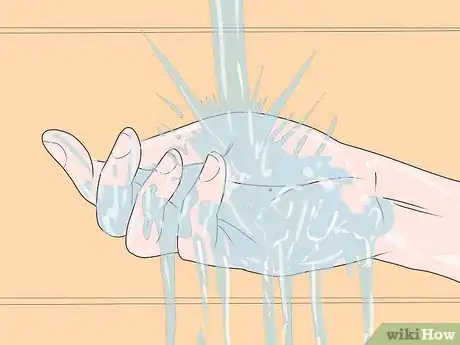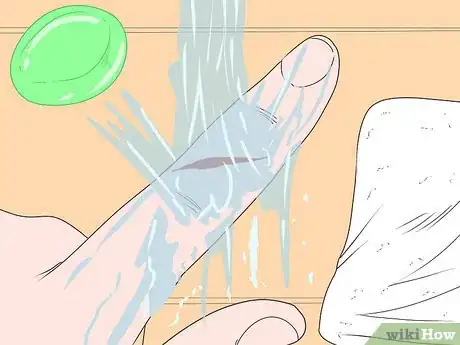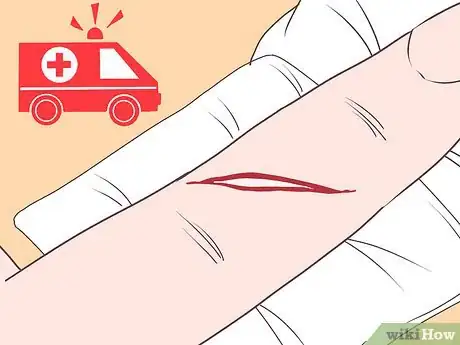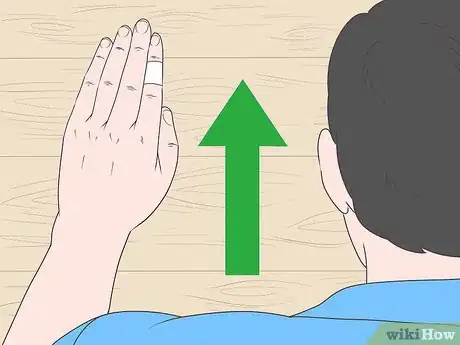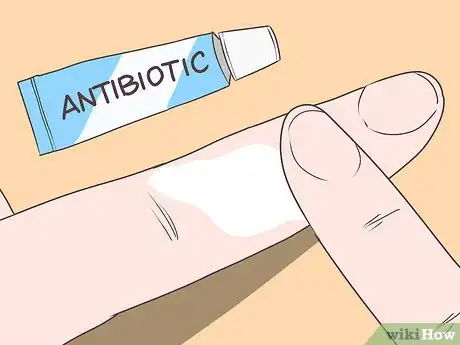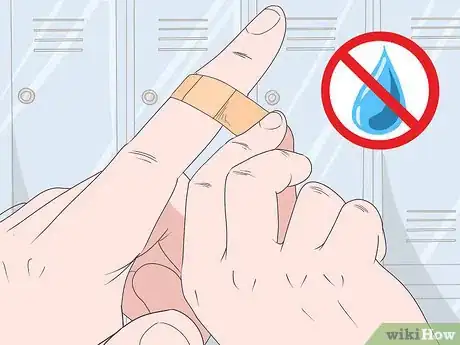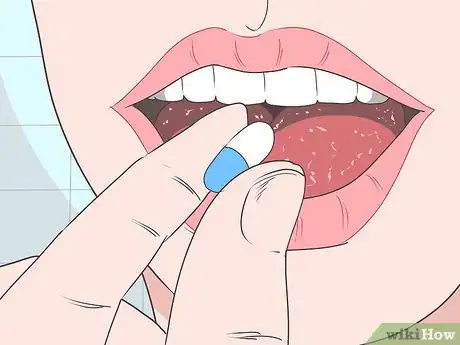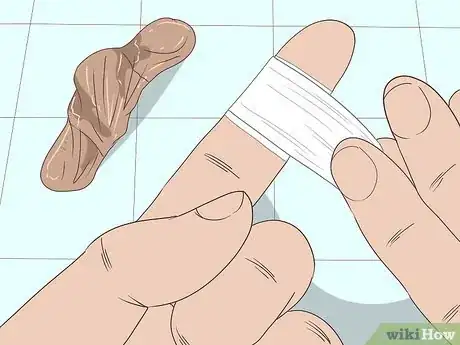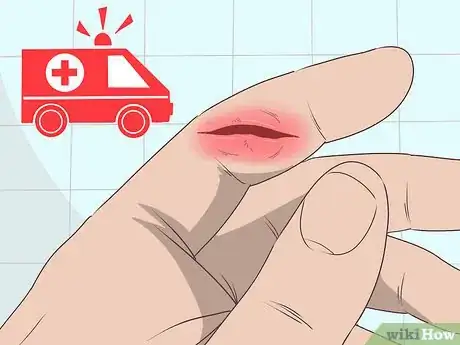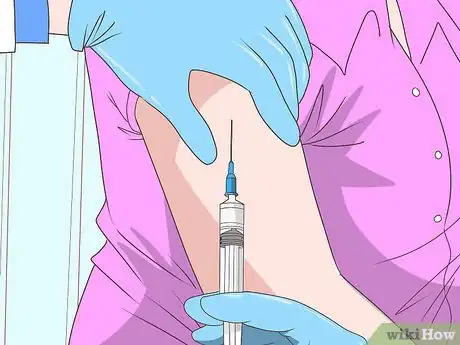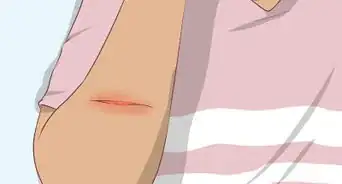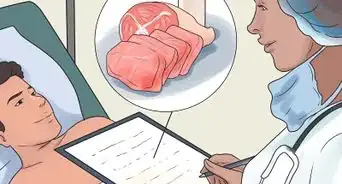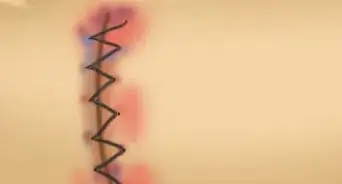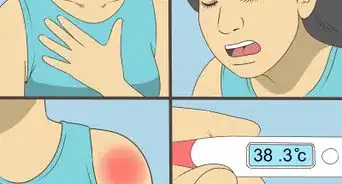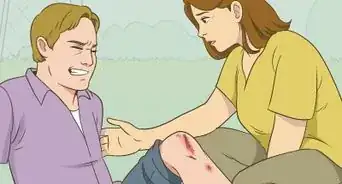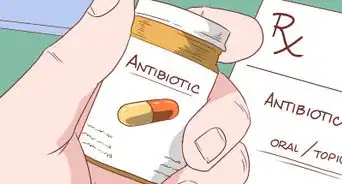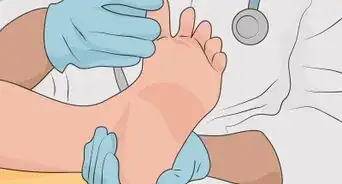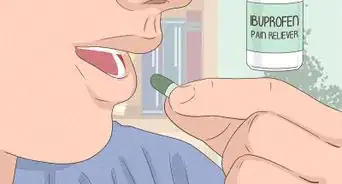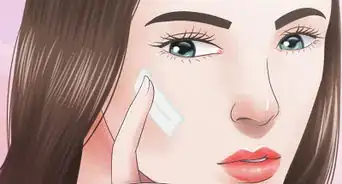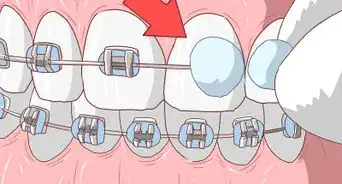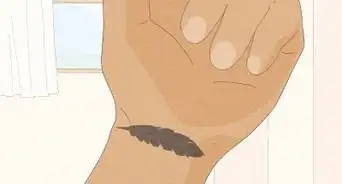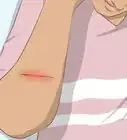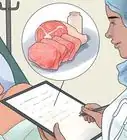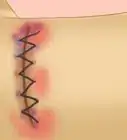This article was co-authored by Anthony Stark, EMR. Anthony Stark is a certified EMR (Emergency Medical Responder) in British Columbia, Canada. With over 11 years of experience, he has worked as an industrial medic and provided urban and rural paramedic services. He currently works for Mountain View Safety Services and previously worked for the British Columbia Ambulance Service. Anthony has a Bachelor of Engineering in Electrical, Electronics, and Communications Engineering from the Georgia Institute of Technology. He has completed the EMP Canada EMT Course and Swiftwater Awareness Training associated with the British Columbia Ambulance Service.
wikiHow marks an article as reader-approved once it receives enough positive feedback. This article received 14 testimonials and 84% of readers who voted found it helpful, earning it our reader-approved status.
This article has been viewed 509,803 times.
Maybe you cut your finger while cooking or nicked it while playing sports. Finger injuries are common and often do not require emergency medical care; however, if the cut appears deep, you cannot stop the bleeding from the cut, or there is a foreign object in the cut (a shard of glass or metal, for example), you should seek immediate medical attention.[1]
Steps
Cleaning the Cut
-
1Wash your hands before you touch the cut. Doing this will limit the risk of you infecting the cut with bacteria from your hands.[2]
- If you have access to disposable medical gloves, put one on your uninjured hand to prevent exposing the cut to the bacteria on your hand.
-
2Clean the cut. Use clear, running water to rinse the wound. Take a clean washcloth, wet it, and dip it in soap. Clean around the wound with the soapy washcloth, but keep soap out of the cut, as it can cause irritation. Pat the cut dry with a clean towel once you have cleaned it.[3]
- If there is dirt or debris in the cut after you have rinsed it and washed around it, use tweezers to remove the debris. Dip the tweezers in rubbing alcohol to sanitize it before you use it on your cut.[4]
- You do not need to use hydrogen peroxide, rubbing alcohol, iodine, or an iodine-based cleanser on the cut, as these products can be irritating to the damaged tissue.
- If debris still remains the cut, or is hard to remove, you should seek professional medical care at your nearest clinic or hospital.
Advertisement -
3Note if the blood squirts out or oozes out. If blood is squirting out of the cut, you've cut an artery and will require emergency care right away. You likely will not be able to stop the bleeding on your own. Apply pressure to an artery cut with a clean washcloth, towel, or sterile gauze and go to the emergency room. Do not attempt to apply a tourniquet to the cut.
- If blood is oozing out of the cut, this means you've cut a vein. Vein cuts will stop bleeding after about 10 minutes, with the proper care, and can usually be treated at home.[5] As with any severe bleed, apply pressure using sterile gauze or dressings to the wound.
-
4Check how deep the wound is. A deep wound that goes all the way through your skin and is gaping, with exposed fat or muscle, will need stitches. You should go to emergency care as soon as possible if the cut is deep enough for stitches. If the cut appears to be just below the surface of your skin and has minimal bleeding, you can treat it at home.[6]
- Properly closing a deep wound within a few hours with stitches will minimize scarring and reduce your risk of infection.
- Generally, if the cut is less than 3 cm in length, less than 1/2 cm (1/4 inch) deep, and no lower structures are involved (muscle, tendon, etc.), the cut is considered minor and can be treated without stitches.
-
5Stop the bleeding. Minor cuts usually stop bleeding after several minutes on their own. If the cut on your finger is oozing blood, use a clean cloth or a sterile bandage to apply gentle pressure to the cut.[7]
- Elevate the cut by raising your finger over your head, above your heart. Keep the dressing on the cut as you raise it over your head to soak up the blood.
-
6Put an antibiotic cream or ointment on the cut. Once the bleeding is stemmed, applying a thin layer of Neosporin or Polysporin on the cut will help keep the surface of the cut moist. These products will not make your cut heal faster, but they will prevent infection and encourage your body to start the natural healing process.[8]
- Some people may develop a rash due to the ingredients in these ointments. Stop using the ointment if you develop a rash.
-
7Bandage the cut. Cover the cut with a bandage to keep it clean and prevent harmful bacteria from getting into the cut.[9]
- Use a waterproof band-aid or plaster so you can keep the bandage on while you are in the shower. If the bandage does become wet, remove it, air dry the wound, re-apply any creams you have been using and re-bandage.
-
8
Keeping the Cut Clean
-
1Change the dressing once a day. You should also change the dressing if the bandage becomes wet or dirty.[12]
- After the cut has healed enough and there is a scab forming on the cut, you can leave it uncovered. Exposing it to the air will speed up healing.
-
2Seek medical care if the cut becomes swollen, very red, full of pus, or you experience a fever. These are all symptoms of a possible infection. You should get the cut looked at by a doctor if you experience any of these symptoms.[13]
- If you lose mobility in your hand or experience numbness of your finger, you may have a more serious infection and should see a doctor right away.[14]
- Red streaks radiating from the cut are a sign of severe infection and medical attention should be sought immediately.
- If your cut was from an animal bite or a human bite, you should get it checked by a doctor. An animal bite, especially from a wild animal like a raccoon or a squirrel, may pose a rabies risk.[15] Domestic animals and humans have bacteria in their mouths that, once embedded in the skin, can greatly increase chance of infection.
-
3Get a tetanus shot if the cut is dirty or deep. Once the doctor has cleaned the cut and given you stitches for the deep cut, you should ask about getting a tetanus shot to prevent infection.[16]
- As well, if you haven't had a tetanus shot in the past five years and the cut is serious, you should get a tetanus shot as soon as possible.
Expert Q&A
Did you know you can get expert answers for this article?
Unlock expert answers by supporting wikiHow
-
QuestionIf I didn't clean my finger when I cut it, what will happen?
 Jonas DeMuro, MDDr. DeMuro is a board certified Pediatric Critical Care Surgeon in New York. He received his MD from Stony Brook University School of Medicine in 1996. He completed his fellowship in Surgical Critical Care at North Shore-Long Island Jewish Health System and was a previous American College of Surgeons (ACS) Fellow.
Jonas DeMuro, MDDr. DeMuro is a board certified Pediatric Critical Care Surgeon in New York. He received his MD from Stony Brook University School of Medicine in 1996. He completed his fellowship in Surgical Critical Care at North Shore-Long Island Jewish Health System and was a previous American College of Surgeons (ACS) Fellow.
Board Certified Critical Care Surgeon
Things You'll Need
- A clean towel
- Access to running water
- Tweezers
- Rubbing alcohol
- Antibiotic cream or ointment
- Bandages
- Stiches (if cut is large)
- Gauze (to stop bleeding)
References
- ↑ http://www.nhs.uk/Conditions/Cuts-and-grazes/Pages/Introduction.aspx
- ↑ http://www.mayoclinic.org/first-aid/first-aid-cuts/basics/ART-20056711
- ↑ http://www.berkeleywellness.com/self-care/over-counter-products/article/wound-care-essentials
- ↑ https://www.drugs.com/cg/finger-laceration.html
- ↑ http://www.thesurvivaldoctor.com/2011/09/28/skin-lacerations-how-to-treat-a-cut-scrape-gash-stab-wound/
- ↑ http://www.mayoclinic.org/first-aid/first-aid-cuts/basics/ART-20056711
- ↑ https://www.drugs.com/cg/finger-laceration.html
- ↑ http://www.mayoclinic.org/first-aid/first-aid-cuts/basics/ART-20056711
- ↑ http://www.mayoclinic.org/first-aid/first-aid-cuts/basics/ART-20056711
- ↑ http://www.nhs.uk/Conditions/Cuts-and-grazes/Pages/Introduction.aspx
- ↑ http://www.mayoclinic.org/diseases-conditions/heart-disease/in-depth/daily-aspirin-therapy/ART-20046797
- ↑ http://www.mayoclinic.org/first-aid/first-aid-cuts/basics/ART-20056711
- ↑ https://www.drugs.com/cg/finger-laceration.html
- ↑ http://www.nhs.uk/Conditions/Cuts-and-grazes/Pages/Introduction.aspx
- ↑ http://www.nhs.uk/Conditions/Cuts-and-grazes/Pages/Introduction.aspx
- ↑ https://www.drugs.com/cg/finger-laceration.html
About This Article
Before treating a cut on your finger, make sure to wash your hands to limit your risk of infecting the cut with bacteria. Once your hands are clean, run clear water over the wound. If there is any dirt or debris in the cut, use tweezers to remove it. When the cut is completely clean and the bleeding has stopped, apply a thin layer of antibiotic cream on the cut to prevent infection. Finally, cover the cut with a bandage to keep the wound clean and free of bacteria. To learn how to change the bandage on your cut finger, keep reading!
